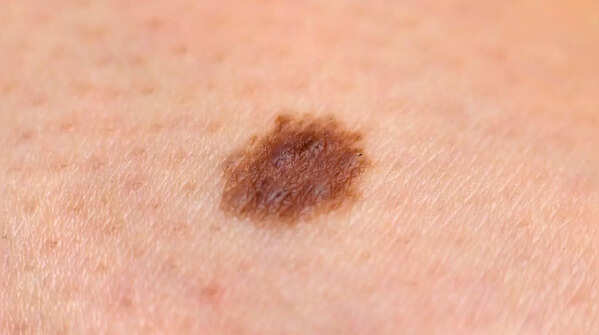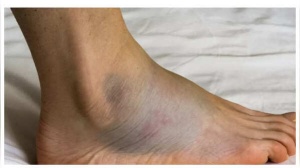Skin cancer ranks among the most prevalent cancers globally, often manifesting subtly as a new mole or a minor skin change. Early detection dramatically improves treatment outcomes. Recognizing suspicious spots is crucial. Be alert for new growths, unusual moles, or slow-healing sores. Here's how to identify early signs and when to consult a doctor:

The ABCDE method aids in detecting melanoma, a serious skin cancer form. This method focuses on five key characteristics:
If a mole exhibits any of these signs, seek professional dermatological evaluation.

Persistent skin sores or scabs that repeatedly heal and recur, or fail to heal altogether, can indicate basal or squamous cell carcinoma. These sores often present as pink, red, or slightly scaly patches and may bleed or ooze. Any sore lasting over three weeks or recurring in the same location warrants medical attention.
Persistent wounds, particularly on the face, arms, or scalp, should be examined by a doctor as they could be a subtle sign of skin cancer.

Moles should remain painless and stable. The onset of itching, tenderness, bleeding, or crusting in a mole can signal skin cancer. These symptoms often point to inflammation or structural changes within the skin and necessitate prompt evaluation by a skin specialist.

Skin cancers don't always arise from existing moles. New growths, such as small lumps, shiny bumps, or rough patches, especially on sun-exposed areas, can be indicative of skin cancer. Timely examination by a skin specialist is crucial.

When a mole's color shifts or spreads to surrounding skin, or if the edges fade, it could signify melanoma. This irregular pigment spread suggests potential deeper or wider growth. Regular mole comparisons, aided by photographs if needed, can help detect subtle changes indicative of skin cancer. Consult a dermatologist immediately if you observe such changes.
Newer articles
Older articles
 5 Overlooked Warning Signs of Colon Cancer: Early Detection Saves Lives
5 Overlooked Warning Signs of Colon Cancer: Early Detection Saves Lives
 Shukla's ISS Arrival Heralds New Era for Indian Space Exploration; Gaganyaan Mission Looms
Shukla's ISS Arrival Heralds New Era for Indian Space Exploration; Gaganyaan Mission Looms
 Vijay Sethupathi Apologizes Amid Controversy Over Son Surya's Film 'Phoenix'; Thalapathy Vijay's Support Revealed
Vijay Sethupathi Apologizes Amid Controversy Over Son Surya's Film 'Phoenix'; Thalapathy Vijay's Support Revealed
 Android Security Alert: Government Warns of Critical Flaws Exposing User Data
Android Security Alert: Government Warns of Critical Flaws Exposing User Data
 Ashada Gupt Navratri 2025: Dates, Significance, and How to Observe This Hidden Festival
Ashada Gupt Navratri 2025: Dates, Significance, and How to Observe This Hidden Festival
 Smith Eyes Grenada Test Return After Injury Layoff
Smith Eyes Grenada Test Return After Injury Layoff
 Skin Deep: 7 Warning Signs on Your Skin That Could Signal Heart Trouble
Skin Deep: 7 Warning Signs on Your Skin That Could Signal Heart Trouble
 Staying Hydrated May Significantly Lower Risk of Heart Failure, New Study Suggests
Staying Hydrated May Significantly Lower Risk of Heart Failure, New Study Suggests
 Moto G54 Price Slashed in India: Check Out the New, Lowered Costs
Moto G54 Price Slashed in India: Check Out the New, Lowered Costs
 Gambhir Sidelines Pant's Twin Tons After India's Test Loss, Emphasizes Team Performance
Gambhir Sidelines Pant's Twin Tons After India's Test Loss, Emphasizes Team Performance